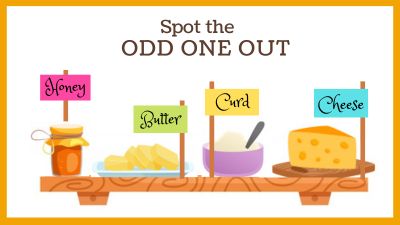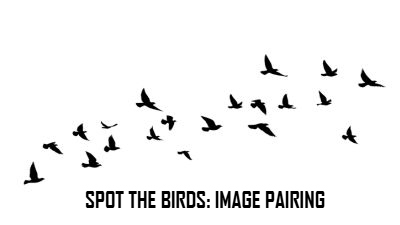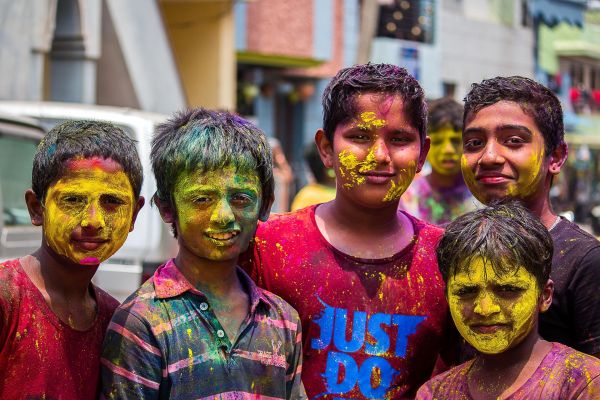The Formula One 2025 season is off to a blistering start. Find out more about this year’s action with this quick quiz.

After a season break, Formula One action is officially back! The first race weekend of 2025 took place between March 14 and 16. Did you know that the 2025 calendar marks the 75th anniversary of the FIA Formula One World Championship?
Learn some quick facts about this season by guessing the answers to the questions below.
Photos: Wikimedia Commons
Three special days and a crossword that combines all those themes. Get cracking and see how many clues you can answer.

In March, we celebrate nature with three special days: World Sparrow Day on March 20, International Day of Forests on March 21, and World Water Day on March 22. Now here’s a crossword on all three themes. Use the picture and text clues to complete the grid.
On March 21 every year, we celebrate International Day of Forests. Find out more about how forests help us.

March 21 is International Day of Forests. Forests play an important role in sustaining life on Earth. They provide oxygen, store carbon, support biodiversity, and regulate climate. Forests also help prevent soil erosion, maintain water cycles, and are home to millions of people and wildlife. They also provide raw materials such as timber, wood pulp, and fuel for various industries. It is imperative that the rich resources contained in forests be used judiciously and sustainably. They form the nation’s natural wealth and need to be protected at all costs.
Activity for you! The image below contains some fascinating facts about the Amazon rainforest. Can you put the jigsaw together? Click on ‘Start game’ to begin.
Six questions to ring in the weekend… FInd out how many you can answer correctly.

A general knowledge quiz to jog your grey cells. How many questions can you answer?
Exercise keeps you strong, happy, and full of energy. Here’s five reasons why you should get moving!

Running or playing a sport is more than just fun. It’s also an awesome way to keep your body strong, your mind sharp, and your mood happy. Whether you’re dancing, cycling, or just jumping around, moving your body has amazing benefits.
Scroll through the below slides to find out five reasons why exercising is great for you.
Images: Canva
Some food items just don’t fit in! Can you spot the odd one out in this delicious quiz? Get started now.

Welcome to the kitchen, young chefs! Test your kitchen smarts by taking this fun odd-one-out quiz.
Time to test you knowledge of birds. How many can you identify correctly? Get, set, go.

Ever thought of how much fun an ornithologist would have? Who is an ornithologist, though? One who studies birds and is an expert on the subject. While you may not be one, you are sure to know about quite a few birds. See how many you can recognise by matching the images with the right names.
Take a look at this Halloween-themed picture. Can you find the 10 differences between them?

There are two pictures with the same theme. However, if you look closely you will understand why they are not the same. There are 10 differences between the two. Spot them all!
Click on the differences in the image on the right.
Following these simple rules will ensure that you enjoy the festival of colours and also stay safe.


Even as multi-hued flowers burst into bloom as Spring arrives, India celebrates the festival of colours. Holi brings with it the warmth and vibrancy of the season, as everyone gathers to celebrate the end of the winter chill and enjoy the mouth-watering gujjiyas, malpuas and thandai. However, while celebrating Holi, there are few things to remember to make it a safe and inclusive festival for everyone.
We are the champions! In a thrilling final, the Indian team roared to victory, claiming their third ICC Champions Trophy title.

India have won the ICC Champions Trophy 2025! It was a nailbiting final against New Zealand at Dubai, a fitting finale to the highly competitive tournament. New Zealand set a target of 252 runs, which India chased down with six balls to spare. What a thrilling match!
This is India’s third Champions Trophy victory, having previously won it in 2002 (shared with Sri Lanka) and 2013. This makes India the most successful team in the tournament’s history.
Jigsaw puzzles for you! Savour India’s victory with these puzzles that capture the magic of the final.
Photos: PTI, Getty Images










